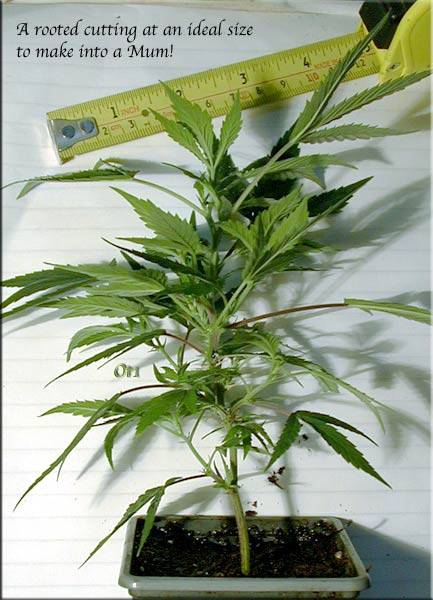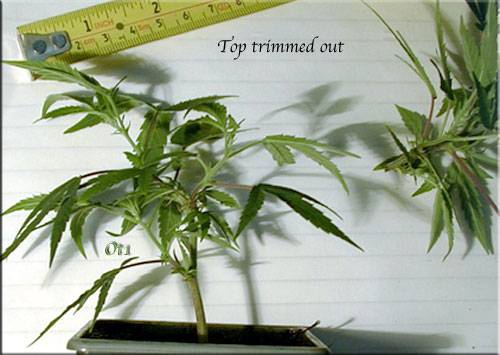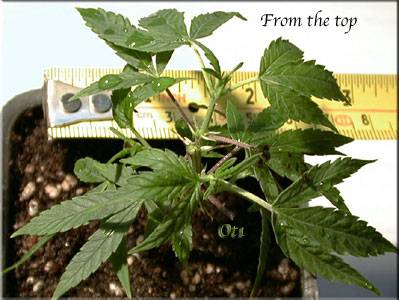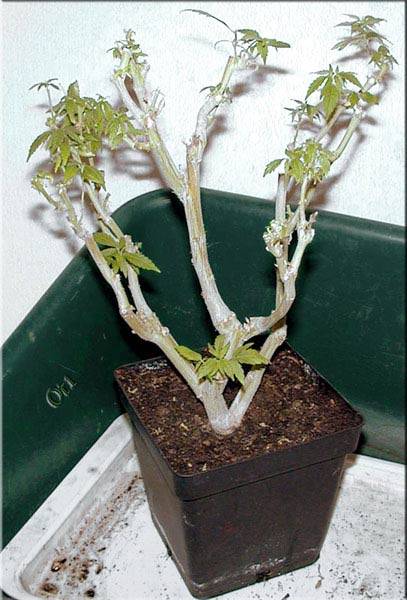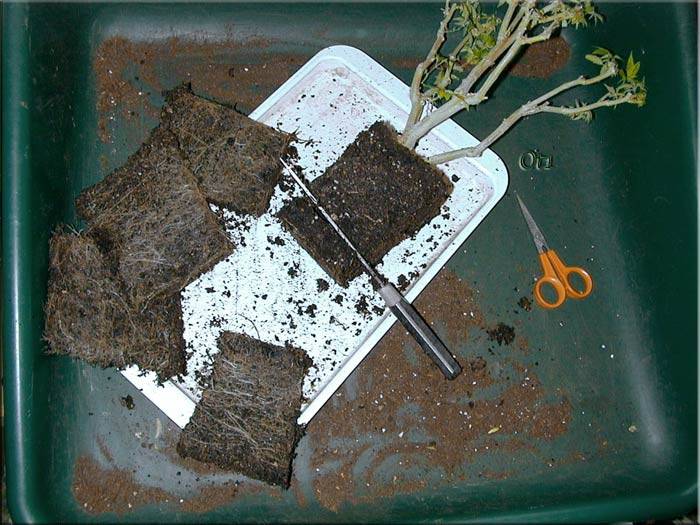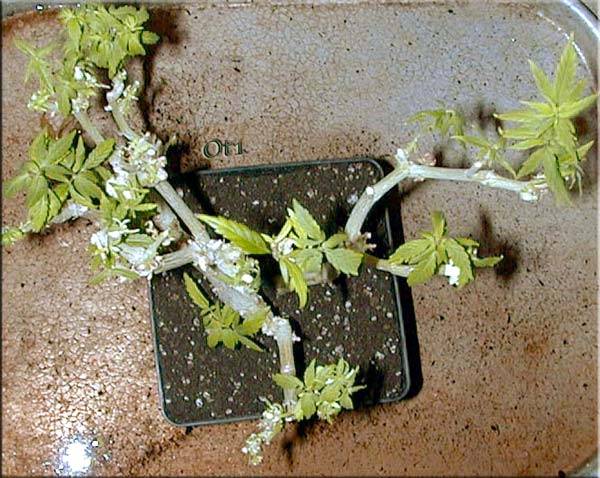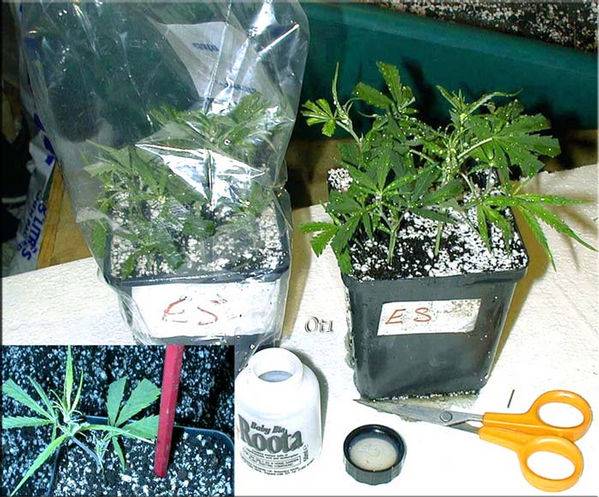Kerberos
Active Member
This is both a small recount of my bonsai mothers, and a question on who else out there is doing them, by what methods, etc.
I just put to rest a bonsai mum who was around for nearly 2 1/2 years and am starting again. Share and learn, share and learn.
My bonsai mum ideas all came from the old Overgrow and their articles. I followed a lot of what the old 'caring for bonsai mothers' article as well as a good debate on lighting cycles for stasis or slight-stressed delayed growth. (re: lighting, If anyone has a link to that btw it was offsite but I've lost it to time)
My mums started as clones, went into little square pots, cutting the roots back every 30d, each time guaging if it needed to move up a little.
Growing the pots until finally they would rest at something near a quart capacity. I'm going to shoot for a smaller pot this time but a larger pot can retain moisture for longer letting you ignore them longer (which has pros/cons).
Give them nutes only when you could see a deficiency or other indicator, the idea being you want these ladies to last and stay small. I want them healthy enough but not enough to go crazy.
Their light cycle was the most screwy, a couple hours on, an hour off, four more on, three off, etc, etc. Keeping them somewhere in limbo, enough light, and enough dark, but nothing that would fully commit it to a flowering or vege state.
2-3 weeks before needing clones I'd pull them from their pots, soak them in a little bath with a real real light growth-gh solution, repot them and give them 22hrs of light. They'd spring forth life, I'd take the new clone offshoots, and then bury them in their psychotic routine again.
This works pretty well but they stem up after a while and even with generous pruning you start slowly getting higher and higher until you're no longer optimal with lighting. I've seen how the plan can reflower lower down an old stock/trunk but don't know how to trigger it beyond very small flowers. There's something in that thought but I don't have the time to really process it. If I could get them to regrow the trunk it'd help.
The longer you keep your plants in a stasis sort of state the longer it takes them to recover and the more I've noticed the production facilities seem to be damaged.
I kept a mum suspended for 1 year. Even after a month of normal light and nutes it was no longer a producing quickly, nor of high quality. I took one of my (out of 2) year suspended mothers and put her under an hps and that much energy really confused it hehe.
I'm thinking you can't keep screwing with life forever, and I'm happy to be able to get a good year or two out with only monthly maintenance and weekly (or bi-monthly) waterings.
I'm just curious where it's gone. Is there new techniques that you all have found that I've missed since the loss of OG, or are we all still about the same place?
-K-
I just put to rest a bonsai mum who was around for nearly 2 1/2 years and am starting again. Share and learn, share and learn.

My bonsai mum ideas all came from the old Overgrow and their articles. I followed a lot of what the old 'caring for bonsai mothers' article as well as a good debate on lighting cycles for stasis or slight-stressed delayed growth. (re: lighting, If anyone has a link to that btw it was offsite but I've lost it to time)
My mums started as clones, went into little square pots, cutting the roots back every 30d, each time guaging if it needed to move up a little.
Growing the pots until finally they would rest at something near a quart capacity. I'm going to shoot for a smaller pot this time but a larger pot can retain moisture for longer letting you ignore them longer (which has pros/cons).
Give them nutes only when you could see a deficiency or other indicator, the idea being you want these ladies to last and stay small. I want them healthy enough but not enough to go crazy.
Their light cycle was the most screwy, a couple hours on, an hour off, four more on, three off, etc, etc. Keeping them somewhere in limbo, enough light, and enough dark, but nothing that would fully commit it to a flowering or vege state.
2-3 weeks before needing clones I'd pull them from their pots, soak them in a little bath with a real real light growth-gh solution, repot them and give them 22hrs of light. They'd spring forth life, I'd take the new clone offshoots, and then bury them in their psychotic routine again.
This works pretty well but they stem up after a while and even with generous pruning you start slowly getting higher and higher until you're no longer optimal with lighting. I've seen how the plan can reflower lower down an old stock/trunk but don't know how to trigger it beyond very small flowers. There's something in that thought but I don't have the time to really process it. If I could get them to regrow the trunk it'd help.
The longer you keep your plants in a stasis sort of state the longer it takes them to recover and the more I've noticed the production facilities seem to be damaged.
I kept a mum suspended for 1 year. Even after a month of normal light and nutes it was no longer a producing quickly, nor of high quality. I took one of my (out of 2) year suspended mothers and put her under an hps and that much energy really confused it hehe.
I'm thinking you can't keep screwing with life forever, and I'm happy to be able to get a good year or two out with only monthly maintenance and weekly (or bi-monthly) waterings.
I'm just curious where it's gone. Is there new techniques that you all have found that I've missed since the loss of OG, or are we all still about the same place?
-K-


